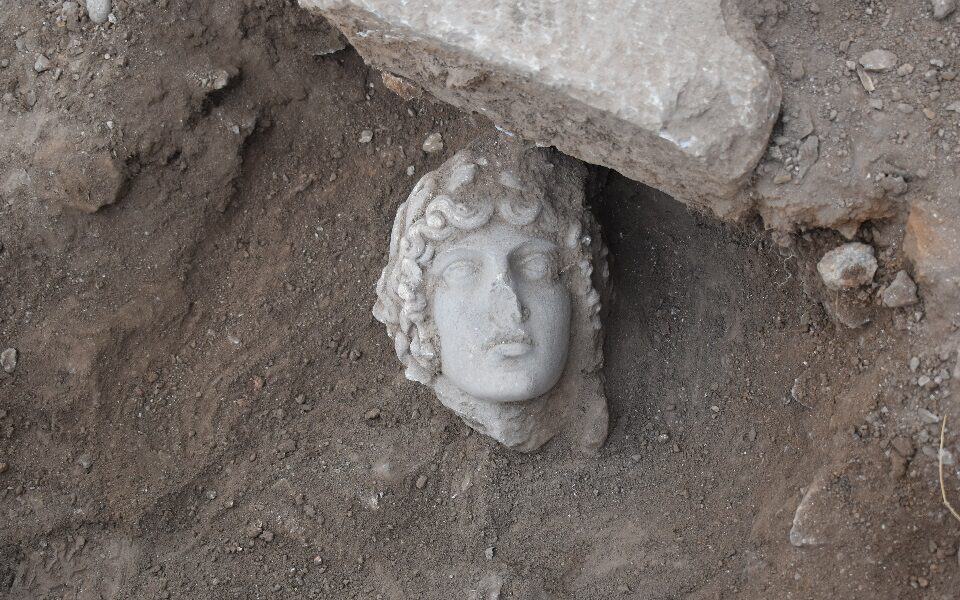Archaeologists from Aristotle University in Thessaloniki have discovered a marble head dating back to the 2nd or early 3rd century AD, believed to belong to a beardless man adorned with a wreath of laurels, most likely representing Apollo.
This significant finding was made during excavations completed last September at the Philippi archaeological site in northeastern Greece, as reported by the Culture Ministry.
The excavations focused on an area to the east of the southern main street, known as decumanus, where it intersects with the northern axis of the city, called Via Egnatia. This particular section revealed part of a square that was dominated by a magnificently decorated building. A remarkable coin featuring the likeness of Byzantine Emperor Leo VI (886-912) was also unearthed on a stretch of marble-paved road adjacent to the site. This coin served as a determining factor in establishing the duration of the building's use.
The Culture Ministry further elaborated on the historical significance of the discovery. It highlighted how statues, dating back to both the Classical and Roman periods, were commonly used to embellish buildings and public spaces in Byzantine cities, including Philippi. The ancient city of Philippi, founded in 356 BC, was situated on the Via Egnatia, an ancient trade route that connected Europe to Asia. This location made it a prominent cultural and commercial hub during its time.


